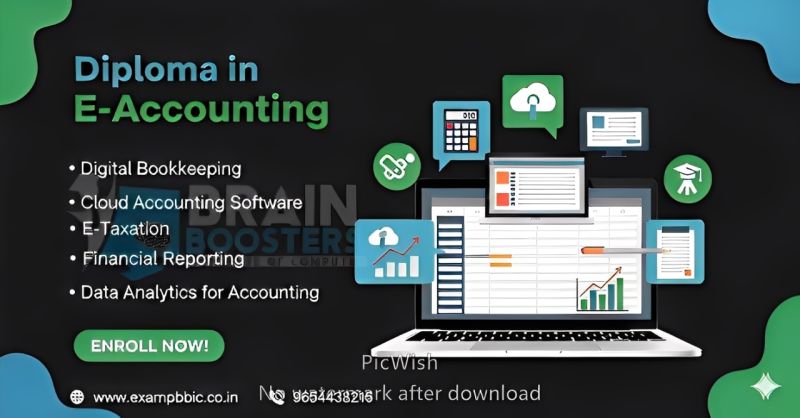
Fundamentals of Accounting: Includes the double-entry system, journalizing, ledger posting, trial balance, and preparation of final accounts (Profit & Loss and Balance Sheet).
Financial Management: Basic concepts of financial analysis, capital structure, and cost of capital.
Cost Accounting: Introduction to cost concepts, cost sheets, and inventory valuation.
Inventory Management: Stock valuation, order management (Sales & Purchase Orders), and tracking.
TallyPrime (or Tally.ERP 9): Comprehensive training on India's most popular accounting software. Topics include company setup, voucher entry, inventory features, and generating all financial and statutory reports.
Busy Accounting Software: Training on this software, which is widely used by Small and Medium Enterprises (SMEs).
Advanced MS Excel: Using Excel for accounting tasks like data analysis, creating MIS (Management Information System) Reports, Pivot Tables, and financial modeling.
Other Software/Concepts: Introduction to other tools like QuickBooks, SAP FICO (basic modules), and E-Banking.
GST (Goods and Services Tax): Detailed coverage of registration, billing, input tax credit, and GST Return Filing (GSTR-1, GSTR-3B, etc.) using software.
TDS (Tax Deducted at Source) & TCS (Tax Collected at Source): Rules, computation, deposit, and e-Filing of TDS/TCS Returns.
Income Tax: Basics of direct taxation, heads of income, deductions, and Income Tax Return (ITR) e-filing for various forms.
Statutory Compliance: Understanding and adhering to legal and financial regulations to avoid penalties.
Payroll Management: Calculating salaries, managing attendance, and statutory deductions like PF and ESI.
Bank Reconciliation: Matching bank and book balances.
Auditing: Basic concepts of auditing and financial compliance.
Data Security & Management: Concepts related to securing and managing accounting data.
The eligibility criteria for a Diploma in E-Accounting typically depends on the institution, but the most common requirement is:
Passed 10+2 (Higher Secondary) or equivalent from a recognized board.
Many institutions accept students from any stream (Commerce, Arts, or Science), though a Commerce background is often preferred.
Some universities or higher-level diplomas may require a minimum percentage (e.g., 40% to 45%) in the qualifying examination.
Basic Computer Knowledge: Since the course involves E-Accounting software and e-filing, familiarity with computers and MS Office is often necessary or at least highly recommended.
Target Audience: These courses are also popular among:
Graduates (B.Com., B.A., B.Sc.) looking for job-oriented skills.
Working professionals seeking to upgrade their skills in modern accounting software and taxation.
Business owners or entrepreneurs who want to handle their own accounting.
In short, a 10+2 pass is generally the standard minimum qualification.